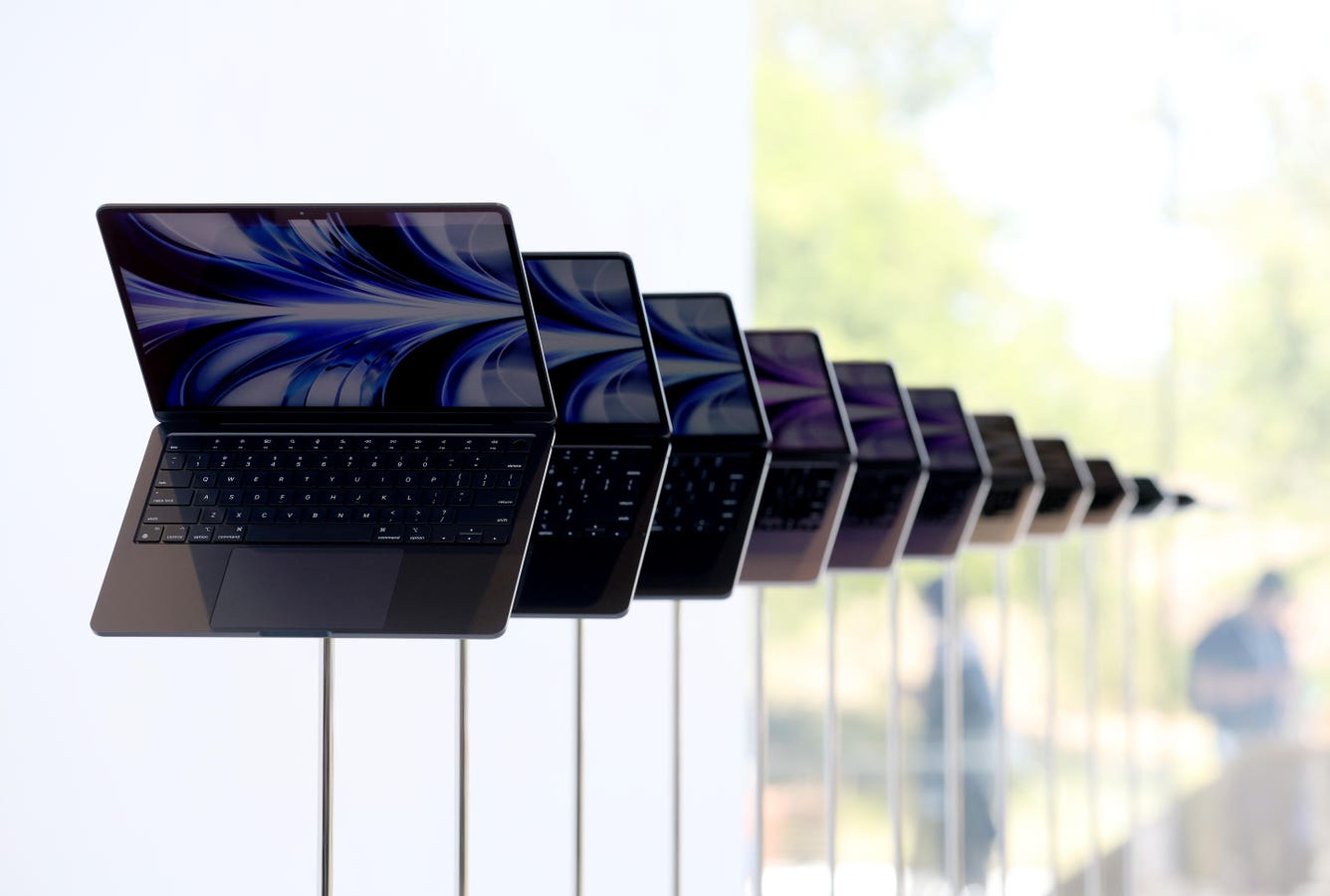This week, Apple is widely expected to launch two new MacBook Pro laptops with the next generation M3 Pro and M3 Max Apple Silicon chipsets. But are these powerful macOS laptops what you really need or want?
Beyond the image of the smiling macOS Finder face and the “Scary Fast” tagline, there are still question marks over the exact hardware and configurations that will be launched on Monday 30th October from 8pm Pacific.
The geekerati’s assumption, at least in terms of laptops, is that we will be seeing two new professionally focused MacBook Pro models with a choice of 14-inch or 16-inch screens. The existing design of these larger laptops currently sold with the M2 Pro and M2 Max chipsets will be used again, meaning that for all practical purposes, Tim Cook and his team will be offering a chipset upgrade and no more.
In broad strokes, that means faster and more efficient CPU and GPU power. No doubt there will be several options in terms of the number of cores alongside the M3 Pro or M3 Max options, but essentially, we’re looking at Apple offering performance for the holidays—hence the “Scary Fast” title of the event. There will be an audience that needs this ultimate amount of power in a laptop, but it’s a tiny percentage of the user base.
It’s unlikely that consumers will need to upgrade to gain all that power. Apple’s move to ARM-based silicon in 2020 reset the expectations of the MacBook platform. The vast majority of consumers will have an excess of power in their existing M2 MacBook Air or M2 MacBook Pro. if the M2 Pro and M2 Max MacBooks offer overkill in terms of performance, the M3 Pro and M3 Max variants will feel like offering a Formula 1 car to your Great Aunt so she can nip down to the local market for some marmalade.
Apple is taking the unusual step of launching the professionally focused M3 Pro and M3 Max laptops ahead of the more consumer-focused M3 MacBook Air or the still awkward 13-inch M3 MacBook Pro. In previous years, the vanilla chipset would launch first before the faster and more powerful Pro and Max variants—and the Ultra version beyond that found in the Mac Studio.
Given the demand on Apple’s supply of 3nm chipsets—used for both the M3 family and the iPhone’s A17 Pro—releasing the higher-tiered laptops addressing a smaller segment of the user base will put less demand on that inventory. Tim Cook and his team will be conscious not to significantly disrupt sales of the iPhone in this critical quarter for the smartphone.
In addition to that, the new MacBook Pro laptops may not go on sale for another month and could easily be limited to a few territories to reduce demand. Balancing limited stock levels in this way should allow Apple to offer a happy medium between driving the Mac platform’s story forward at the same time as it pushes the iPhone 15 Pro and 15 Pro Max as hard as possible.
Another consideration has to be the launch of the 15-inch MacBook Air in June. Powered by the M2 chipset, to update the MacBook Air five months after releasing one of the most discussed consumer laptops would be a slap in the face to many who invested their money in Apple’s laptop family. Who would want to find their laptop had been superseded before the end of the year?
Assuming you are not one of the few who need absolute power out of your macOS laptop and can afford what I expect to be a hefty premium, what options do you have?
One is to wait until the consumer-focused M3 MacBooks are launched, specifically the 13-inch and 15-inch MacBook Air models. These are expected towards the latter half of Q2 2024… just in time to be launched at Apple’s Worldwide Developer Conference. These will offer a step up in power and may feature some design changes that go beyond the “faster chips” approach we will likely see next week.
For many, the answer may already be in the Apple Store. The M2-powered MacBook Air models are already powerful and capable laptops with more than enough capacity for significant video and audio editing and enough chops to run developer software. If you fall into the prosumer market, then the Air offers one of the best balances of cost and capability; for regular consumers, this excess of power means the laptops will always be able to deliver a solid macOS-based experience.
There’s no need to invest in anything “Scary Fast” when all you need is a reliable truck to deliver day in and day out. Enjoy Monday’s launch event, but when the big numbers fade away, think about what you actually need… because it’s already there.
Now read the latest Mac, iPhone, and iPad headlines in this week’s Apple news digest…
Read the full article here





